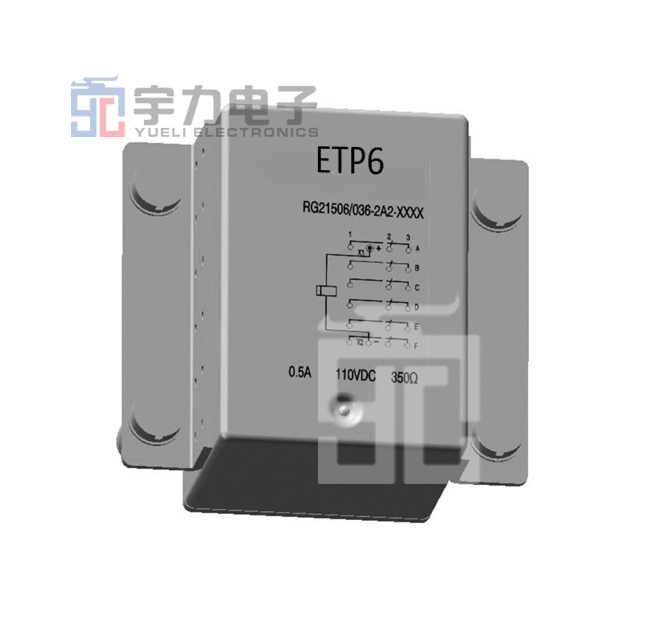A Comprehensive Guide to Sealed Relays: Key Features and Applications
2025-07-27

Sealed relays are specialized electronic components that offer robust performance in a variety of applications. As a subset of relays, these devices are designed to protect internal mechanisms from environmental factors, making them ideal for use in harsh conditions. Here, we will delve into the key features and applications of sealed relays, providing insights that can assist professionals in selecting the right components for their projects.
One of the primary advantages of sealed relays is their ability to withstand moisture, dust, and other contaminants. The encapsulation employed in their design creates a protective barrier, ensuring that the internal components are not compromised. This characteristic is particularly important in industries such as automotive, aerospace, and industrial automation, where reliability is critical. Sealed relays can maintain functionality in extreme temperatures and adverse weather conditions, which enhances their versatility across various applications.
In terms of construction, sealed relays often come in a compact design that allows for easier integration into electronic systems. The use of high-quality materials in their manufacturing helps in achieving superior performance and longevity. Additionally, sealed relays typically exhibit low contact resistance, which contributes to efficient operation and reduced power consumption. This makes them an excellent choice for applications requiring energy efficiency and minimal heat generation.
Sealed relays are commonly used in applications where reliability and durability are paramount. For instance, in automotive systems, they are frequently employed in control circuits for lights, motors, and other critical components. In industrial automation, sealed relays play a significant role in controlling machinery and equipment, where they help ensure operational safety and efficiency. Their application extends to telecommunications, HVAC systems, and home appliances, showcasing their adaptability.
When selecting a sealed relay, professionals should consider various factors such as coil voltage, load rating, and switching capacity. Understanding these parameters is essential for ensuring that the relay meets the specific requirements of the application. Additionally, evaluating the relay's specifications, including its life expectancy and environmental ratings, can aid in making informed decisions.
In conclusion, sealed relays are indispensable components within the electronic components industry, particularly in the realm of relays. Their unique design and protective features make them suitable for a wide range of applications, providing reliability and efficiency in challenging environments. By understanding the functionality and advantages of sealed relays, professionals can make informed choices that enhance the performance and longevity of their electronic systems.
One of the primary advantages of sealed relays is their ability to withstand moisture, dust, and other contaminants. The encapsulation employed in their design creates a protective barrier, ensuring that the internal components are not compromised. This characteristic is particularly important in industries such as automotive, aerospace, and industrial automation, where reliability is critical. Sealed relays can maintain functionality in extreme temperatures and adverse weather conditions, which enhances their versatility across various applications.
In terms of construction, sealed relays often come in a compact design that allows for easier integration into electronic systems. The use of high-quality materials in their manufacturing helps in achieving superior performance and longevity. Additionally, sealed relays typically exhibit low contact resistance, which contributes to efficient operation and reduced power consumption. This makes them an excellent choice for applications requiring energy efficiency and minimal heat generation.
Sealed relays are commonly used in applications where reliability and durability are paramount. For instance, in automotive systems, they are frequently employed in control circuits for lights, motors, and other critical components. In industrial automation, sealed relays play a significant role in controlling machinery and equipment, where they help ensure operational safety and efficiency. Their application extends to telecommunications, HVAC systems, and home appliances, showcasing their adaptability.
When selecting a sealed relay, professionals should consider various factors such as coil voltage, load rating, and switching capacity. Understanding these parameters is essential for ensuring that the relay meets the specific requirements of the application. Additionally, evaluating the relay's specifications, including its life expectancy and environmental ratings, can aid in making informed decisions.
In conclusion, sealed relays are indispensable components within the electronic components industry, particularly in the realm of relays. Their unique design and protective features make them suitable for a wide range of applications, providing reliability and efficiency in challenging environments. By understanding the functionality and advantages of sealed relays, professionals can make informed choices that enhance the performance and longevity of their electronic systems.
Previous:


